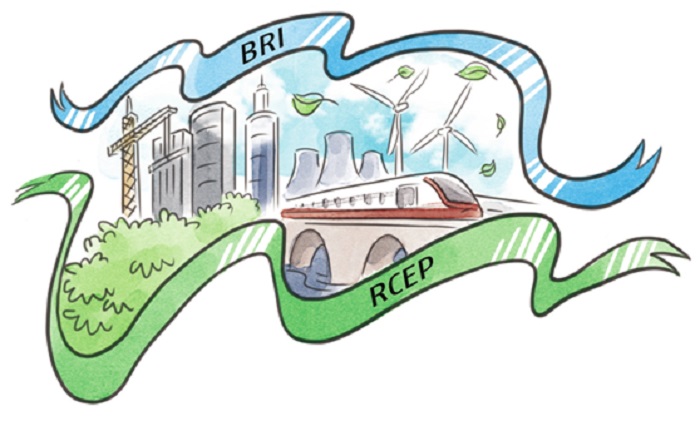



South Asia is a developing region struggling with economic and human development issues and strategies. One way to help pull them out of cycles of poverty is regional cooperation.
Unfortunately, such partnerships are complicated by disputes between India and Pakistan with roots from British rule and their partition. In addition, India is reluctant to embrace the influence of China in South Asia as it gradually expands. From Indian viewpoints, South Asia is undoubtedly its sphere of influence, which encourages New Delhi to build India-led multilateral development mechanisms.
Speaking of regional cooperation of South Asia, there are currently different multilateral cooperation mechanisms, including South Asia Association for Regional Cooperation (SAARC), Bangladesh-China-India-Myanmar Economic Corridor, and Bay of Bengal Initiative for Multi-Sectoral Technical and Economic Cooperation. The SAARC, which has been put on hold for a long time, seems to have been activated under COVID-19. For example, a SAARC coronavirus fund has been proposed. However, the prospects of regional cooperation in the region remain less optimistic due to structural constraints. These entail strained India-Pakistan relations, China-India border spats and India’s troublesome ties with smaller countries around the subcontinent.
In one word, it will be very difficult to achieve better outcomes if South Asian countries rely solely on themselves and existing mechanisms.
Although the impact of COVID-19 has been dramatic, the signing of the Regional Comprehensive Economic Partnership (RCEP) has brought a lot of hope to regional cooperation and given fresh impetus for further economic development in Southeast Asia. People in the region have regained their confidence in multilateral cooperation against the background of US’ retreat from multiple international agreements.
RCEP is a triumph of ASEAN’s middle-power diplomacy. Certain small and medium-sized countries have overcome differences with a consensus that cooperation will do more good for the region. An East Asian trade agreement has long been recognized as something that would add major value to the region. However, China and Japan, the region’s two largest economies, were not considered “politically acceptable” as architects for the project. This stalemate was resolved in 2012 by an ASEAN-brokered deal that included India, Australia and New Zealand as members. Without ASEAN taking up the helm for negotiations, RCEP might never have been launched. China’s economic takeoff has benefited from foreign direct investment from East and Southeast Asia for many years. However, India cannot expect similar economic injections from its South Asian neighbors. This is also one of the considerations behind India’s “Look East” and “Act East” policies. According to a statement issued by RCEP member states, India is still warmly welcome to join this agreement in the future, despite backing out this time.
Given that all South Asian countries are actively responding to the Belt and Road Initiative (BRI) except India, the “Act East” policy of South Asia may be a future option for this region.
From China’s perspective, the BRI and RCEP do not exclude each other. Since the signing of RCEP, there have been heated discussions around dual “circulation” development patterns in China. Moreover, China has been actively exploring synergy between BRI and RCEP. China’s domestic response to the BRI entails the rapid establishment of free trade zones (FTZs). In this year, the number of Chinese FTZs has reached 21. Beijing hopes these free trade zones can make necessary adjustments to expand trade with RECP members. In conclusion, under the circumstances that regional cooperation in South Asia is facing difficulties, BRI and RCEP provide such a great chance to accommodate regional cooperation in both South Asia and Southeast Asia.
The author is Research Fellow, Institute of the Belt and Road Initiative, Tsinghua University. [email protected]
Source: Global Times


The Executive and members of the.


The Acting Director, FCT Directorate of.


President Bola Ahmed Tinubu has been.



Barely a month after resignation of.


An Abuja based Legal Practitioner, Osuagwu.



Convener of Equitable Remedy, Mrs. Magaret.


Contractors handling the contract for city.


Nigerian government may have concluded plans.


The Diplomatic Correspondents Association of Nigeria.


A rights group, “Follow Me Talk.
Leave a Comment